| 1 | Gopher snake |
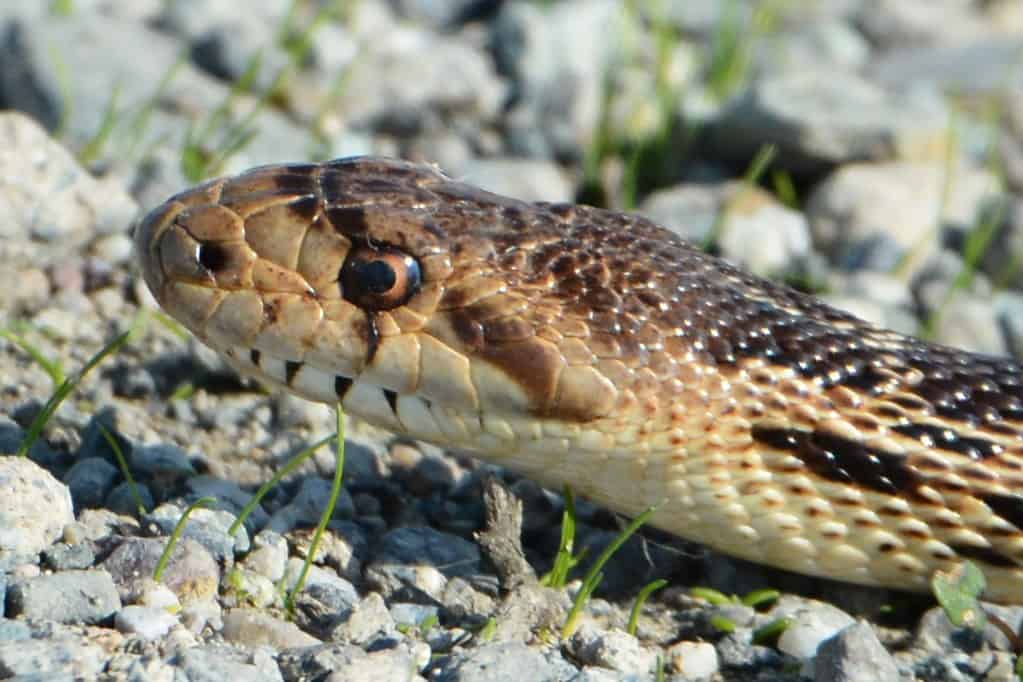
Venomous: no.
A species of virtually the entire western USA, one of the most commonly encountered in California. Gopher snakes have extremely flexible habitats, popping up in woodlands, grassy fields, rocky canyons, towns and wetlands. But agricultural areas rise above the rest.
A huge study on 2600 gopher snakes found that mammals made up most (76.8%) of their prey, and there are few better places to fulfil their desires than crop fields. Gopher snakes lurk within rows of crops, and particularly the bushy areas on their outskirts. This means that gopher snakes are economically beneficial to farmers, reducing the quantity of crops lost to nibbling pests, achieving what scientists spent thousands of hours striving towards in their pesticide labs. Gopher snakes have endless fields to choose from; wheat, corn, potato, and soybean fields are all options.
On the other hand, gopher snakes are a nemesis of egg farmers. They’re cunning enough to slither into henhouses and steal the eggs, and even attempt to swallow grown chickens, sometimes failing and leaving dead chickens covered in a slime. Thankfully, gopher snakes are a harmless constrictor, whose only weapon is a blunt-nosed bash where they close their mouth tightly and launch themselves forward.
| 2 | Coastal taipan |
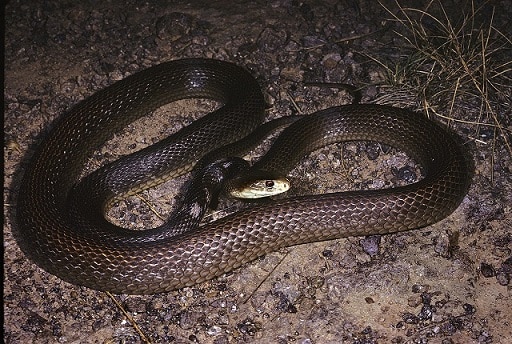
Venomous: yes.
This crop field clean up snake is notorious for inhabiting Australia’s sugar plantations, to the level that workers became reluctant to sign up in Queensland for fear of the taipan bogeyman preparing to pounce. Coastal taipans have a neurotoxic venom which can paralyse a rat’s hind legs in seconds, with an official LD50 estimate of 0.075mg, the third deadliest land snake.
Their natural habitats include more open areas, including grassy fields and sparse woodlands with healthy moisture levels. The sugar plantations which began in northern Australia in the 1850s mimic these perfectly. The Queensland sugar industry particularly accelerated after the 1930s due to scores of migrant workers, and coastal taipan numbers have risen in Australia since then in tight correlation, defying mankind’s urbanising sprawl. Coastal taipans mostly eat rodents such as dusky field rats and pale field rats, with their neurotoxic venom designed to disable their scratching claws rapidly.
The sugar industry grew angry with this uninvited resident, sending snake officianado Ram Chandra to tour Queensland in the 1950s and dispel the fears. But their bottom line has almost certainly befitted from the gnawing rodent clean up, and unlike the Russell’s viper, very few bites on sugar cane workers have been reported.
| 3 | Russell’s viper |

Venomous: severely.
This might be the worst snake in the world. We judge that not just on its venom, which is top 10 for severity, but its extreme attraction to crop fields and rice paddies, causing it to bite thousands of Indian farmers per year. Russell’s vipers are mostly-mammal eaters, and are an ambush snake, which lurks between rows of crops and are almost impossible to notice until you accidentally step on one. They’re aided by their supreme camouflage, with typical beige and brown viper colours.
Indian farmers fear this haemorrhagic, cytotoxic snake above all others. Indian farms are typically bushier and more overgrown than a micromanaged German wheat field, giving the Russell’s viper the perfect habitat to thrive in. Antivenom is extremely hard to deliver to these bitten workers, who work very remotely. They also lack basic protective equipment such as an impenetrable pair of leather boots. Amputation is possible with Russell’s viper bites, depriving farm workers of their livelihood. On the other hand, they do help to remove rat pests, but most farmers would probably be shot of them if they could.
| 4 | Corn snake |
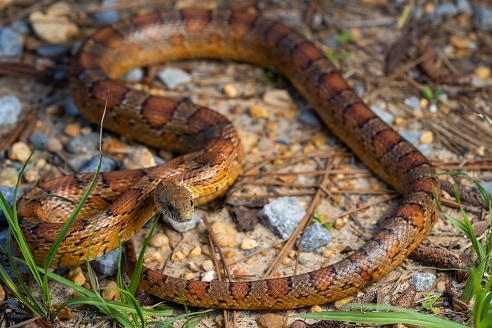
Venomous: no.
Perhaps the most popular snake in captivity worldwide, perfect for a beginner, and recognisable by its red and yellow colours. Corn snakes are such a crop field lover that this is theorised to be the origin of the name.
Early US colonists stored their harvests in roasting corn cribs in hot parts of the country, sheltered barns made from wood. These rickety structures would attract rodents in their thousands, with corn snakes hot on their heels, ready to swallow a tasty meal and inadvertently save the New World explorers from certain starvation at the same time. The colonists recognised the corn snake’s skills as early as the mid-1600s, affectionately granting them the name.
These days, corn snakes are still popular in the overgrown outskirts of crop fields, as the species generally dislikes open areas, naturally preferring sheltered bush. They’re also attracted to human structures like roofs. Mammals make up most of the corn snake’s wild prey, with their favourite being the white-footed mouse.
| 5 | Indochinese ratsnake |
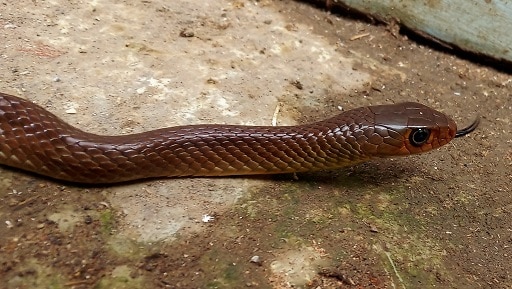
Venomous: no.
This harmless 2 metre snake lives in Thailand, Vietnam, and Cambodia, but particularly Indonesia. This a long, thin brown snake which you could easily trip over, mistaking it for fallen tree branch. They’re alert, focussed and never truly relax around people, whether cameramen or farm workers. They’re closely related to the oriental ratsnake, another rat-lover which is more heavily based in Thailand.
Indochinese ratsnakes (Ptyas korros) eat many animal families, but especially mammals such as Tanezumi rats and Malayan field rats, and it regularly strays into the domain of mankind to get them. In fact, it prefers to make a permanent base in farmer’s fields, so that the rodent party never ends.
Ptyas korros is such a crop field clean up snake that without them, Indonesian agriculture’s fate hangs in the balance. Ptyas korros is a widely harvested species, with thousands per year begin scooped out of the Indonesian countryside for the skin and meat trade (often illegally). By the 2000s, this had accelerated so far that sudden rat plagues appeared from nowhere and devastated Indonesian crops. Farmers didn’t realise how much they were benefitting from the snake until it left. Consequently, farmers in the Javan region of Jogyakarta are now releasing their own batches of Indo-Chinese ratsnakes.
| 6 | Ball python |
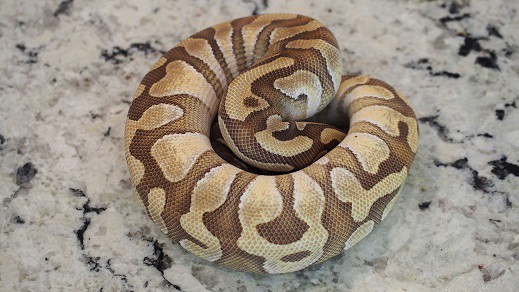
Venomous: no.
The ball python is a boon to West African farmers, and for once, they’re completely aware of it. Ball pythons are revered and treated almost like secondary employees of farms in Nigeria or Ghana, they’re so beneficial. This small, 50-100cm python divides its calories between mammals and birds, with males climbing trees more and having stronger feather-guzzling tendencies.
Ball pythons often rest under dead palm oil trees, or under piles of leaves, the perfect ambush position for rodents scurrying past. Pests that they helpfully hoover up include African giant rats, rufous-nosed rats, and the globally ubiquitous black rat. Ball pythons have even been honoured with temples, and are hailed as a deity, a relic from the time when all of Earth was water. Being so small, they cannot swallow a human, and they rarely bite viciously like a blood python.
That said, as the economy expands, more of Nigeria is graduating to mechanised industrial farm equipment, which can be fatal for ball pythons. It’s traditional hand-picking farmers who benefit more from this snake’s ancient protection.
| 7 | Sumatran spitting cobra |
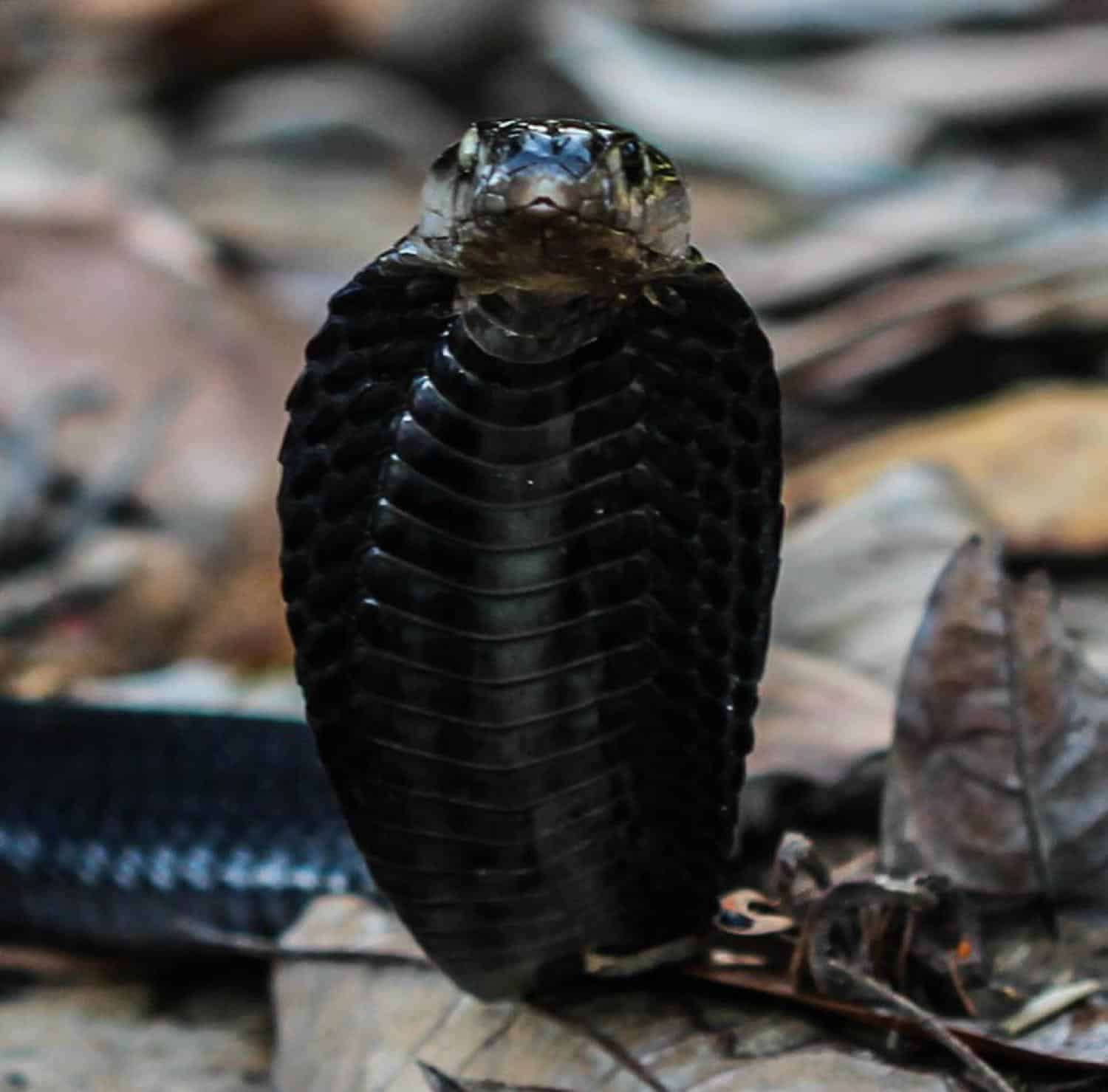
Venomous: yes.
The Sumatran spitting cobra was once a humble forest dweller, kept in check by birds, tigers and the whole intricate ecosystem. Then Indonesia started slashing down its rainforests en masse to create palm oil plantations, and the Sumatran spitting cobra saw an opportunity.
This deadly serpent is now more abundant than it was originally, thanks to a booming Indonesian palm oil industry whose production increased five fold from 2000-2016. Calorie-dense palm oil fruits attract rats in their thousands, which in turn attract spitting cobras in their dozens. These are a constant menace for the workers, with Indonesia suffering 11,000 snakebite deaths per year. Rubber plantations are also popular hangouts for this species.
Naja sumatrana has double the trouble for cautious farm workers. Its spitting venom targets the eyes and can reach at least 1 metre (some say two), causing blindness if untreated. The venom is rich in paralysing neurotoxins, and an especially high quantity of heart-targeting cardiotoxins. On the other hand, Sumatran spitting cobras are sometimes swallowed up by reticulated pythons, which also love palm oil plantations.
| 8 | Trinket snake |
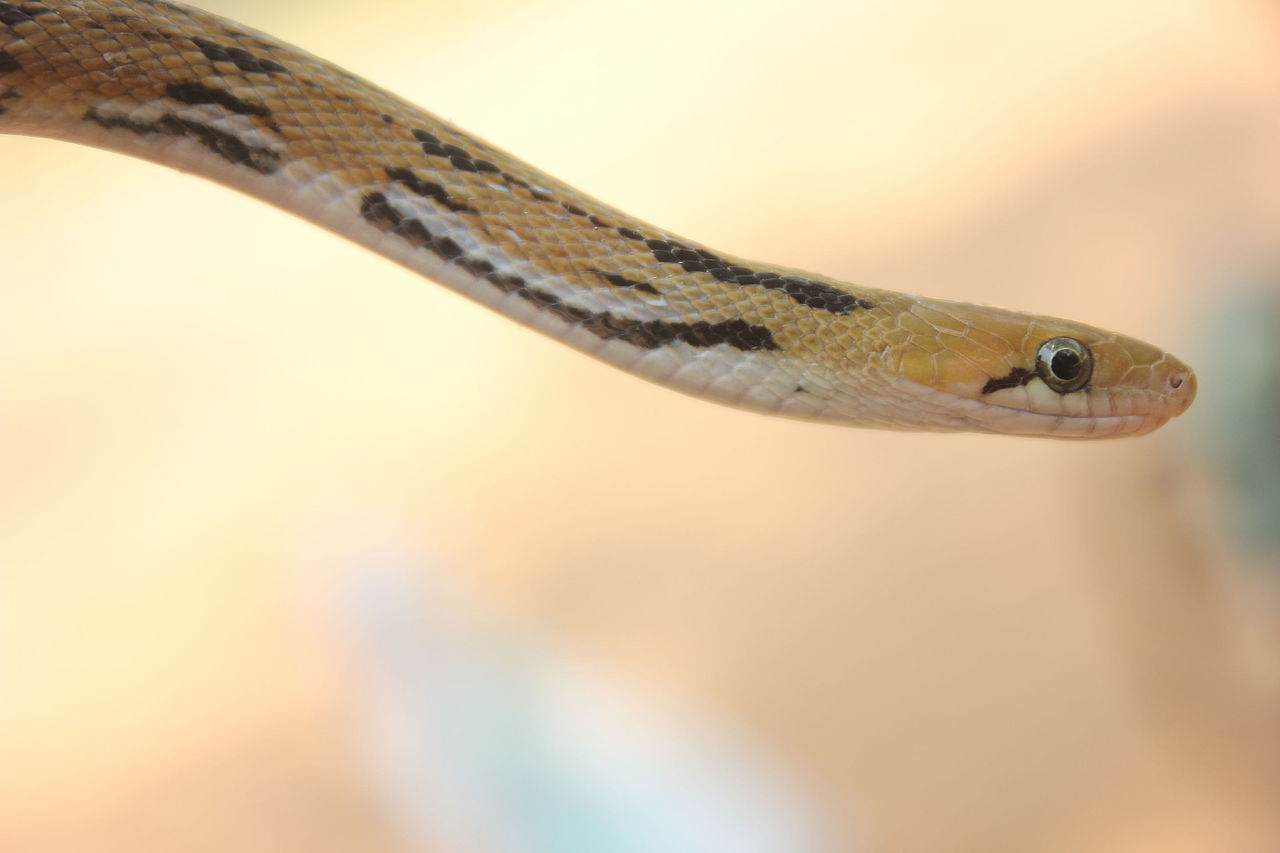
Venomous: no.
A 1-1.4 metre Indian snake which often occupies the same bushy fields as Russell’s vipers. Trinket vipers are non-venomous, yet have savage personalities, baring their fangs while hissing madly. They won’t hesitate to latch onto a farmer’s arm and swing their head from side to side to tear through flesh.
Fortunately, this snake can be a peaceful barley field neighbour if you just keep walking when you hear their piercing hiss. Trinket snakes are also common in rice paddies, and can be spotted slithering across roads between two adjacent wheat fields. Their love of crop fields has given them a happy immunity to agricultural sprawl, although they do end up as roadkill commonly, including by tractors weighing 2.5 tons.
Although the trinket snake’s diet isn’t well studied, there are countless reports from snake enthusiasts battling through India of them devouring rodents. They live in crop fields with their evolutionary relative the radiated ratsnake, which they diverged from approximately 30 million years ago.
| 9 | Eyelash viper |
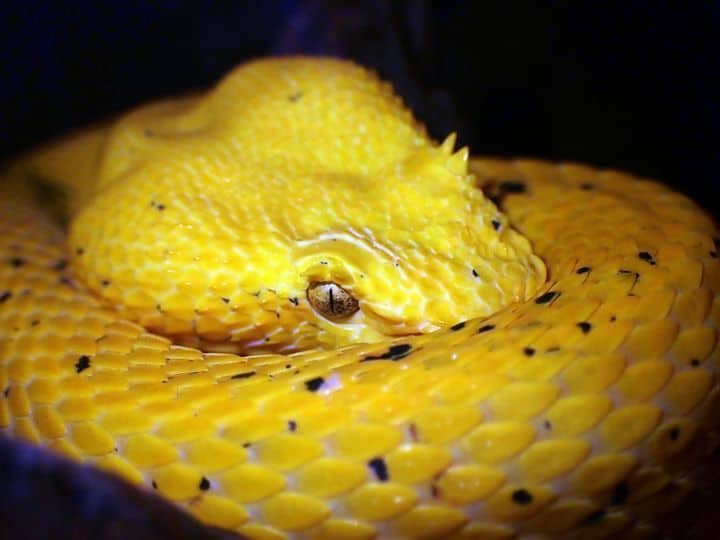
Venomous: yes.
Eyelash vipers are not just an agriculture-loving snake, but metamorphize in order to blend into certain crops. They have many colour phases, with yellow being more common in banana fields, red dominating near bromeliads, and green taking over in traditional forests. Eyelash vipers have even been scooped up by banana harvesters, fallen into wooden crates, and been transported halfway across the world to Western supermarkets.
Eyelash vipers have a varied diet, including mammals and lizards. They typically rest on branches, watching the farm workers busying around below, but can appear on bushes and lower branches, hissing at terrifying people fooled by their camouflage.
They have an excellent memory for branches and can forage on the bushy floors of plantations, before returning to the exact same perch during the day (this is a nocturnal species). Eyelash vipers are another species which constantly keepers banana plantation pickers on their toes. Deaths are rare, but the bite can induce vomiting, a cold sweat, and spontaneous bleeding.
| 10 | Montpellier snake |
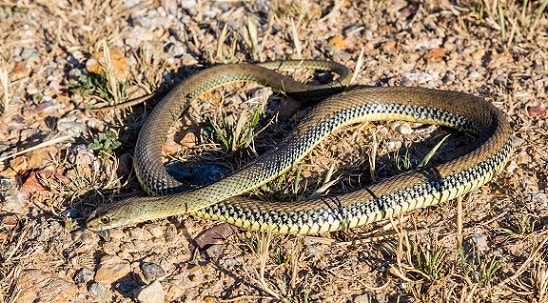
Venomous: slightly.
This is one of Spain’s hardiest and most flexible serpents, which goes wherever it feels in search of its chosen prey. Montpellier snakes even flock to the stench of dumpsters and wastelands in order to guzzle down the rats flocking there, and crop fields are also high on their checklists.
The Montpellier snake weaves in and out of wheat stalks, searching for their prey actively rather than waiting in ambush. They follow behind rats and mice silently, exhibiting enormous patience, pouncing when they’re just feet away. Dozens of these battles happen in a farmer’s field every week, but many are unaware, and shoo the snake away, even whacking them to death with a boot. Montpellier snakes possess a mild venom, but have rear fangs, combined with a tiny mouth, which makes biting almost impossible unless you poke a finger in.
Overall, if all Montpellier snakes vanished from Spain overnight, the country’s agriculture industry would be slightly poorer. This is a fast-moving snake which often appears in bushy areas at the edges of crop fields, or on stone walls between them. They’re also Spain’s longest snake, easily reaching 2 metres.
